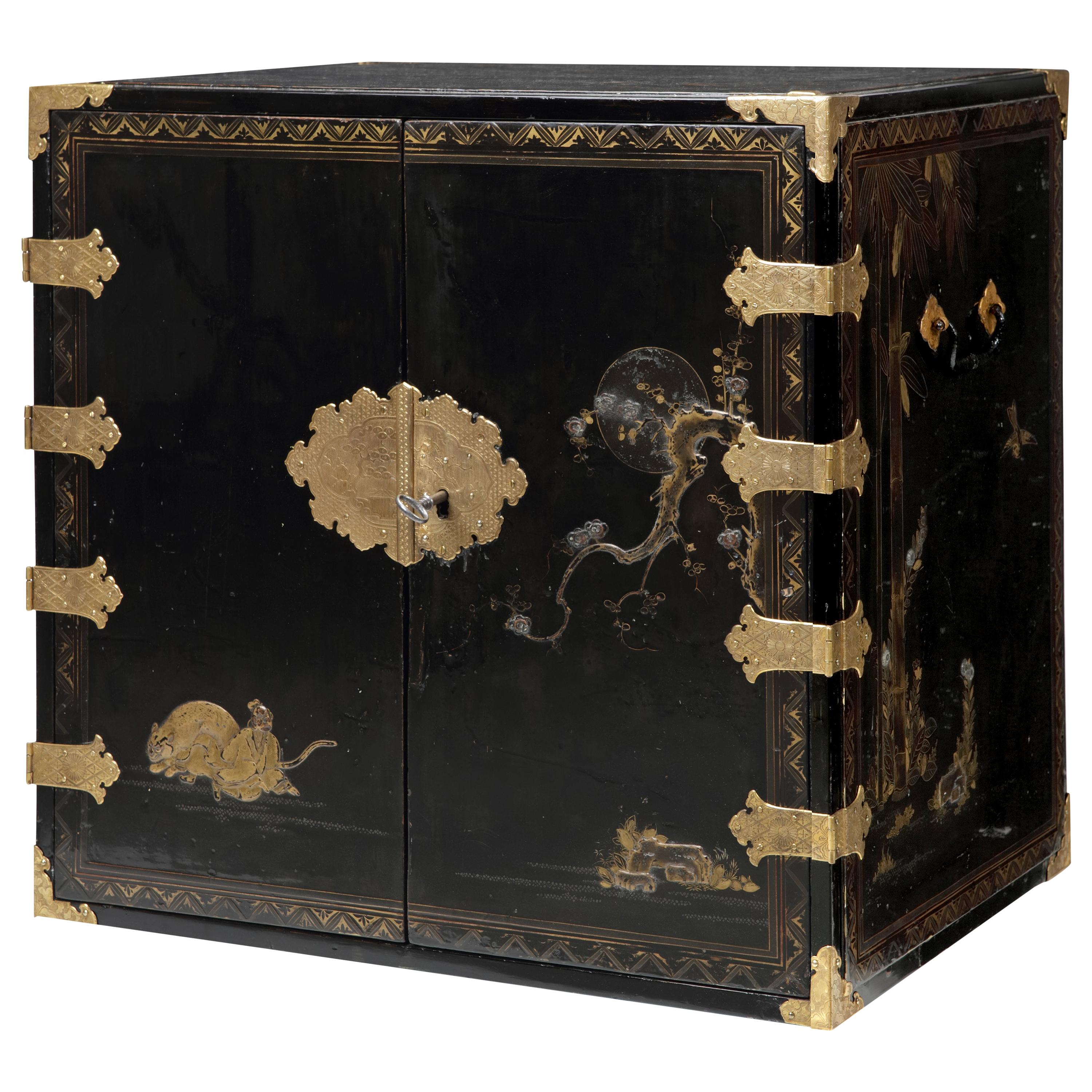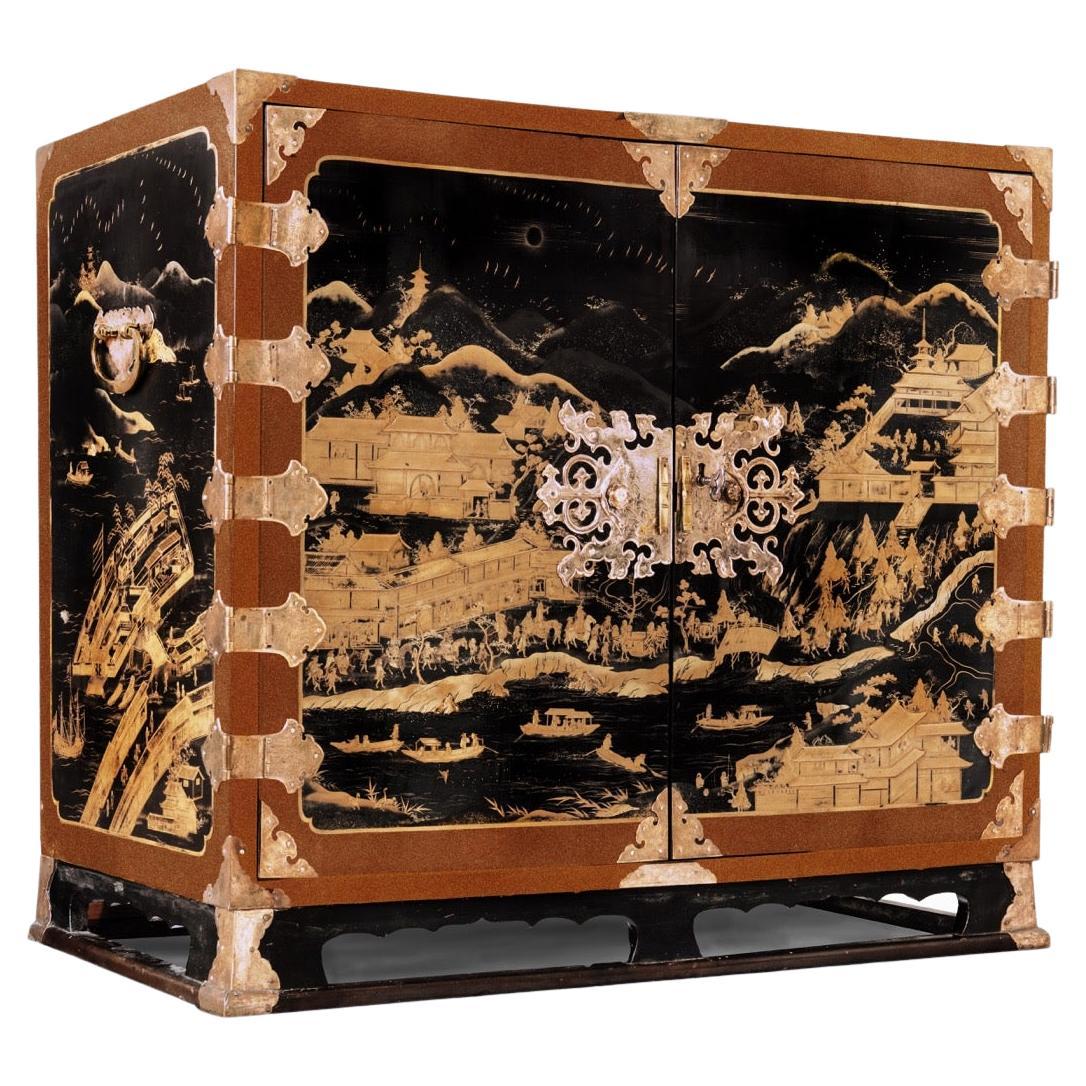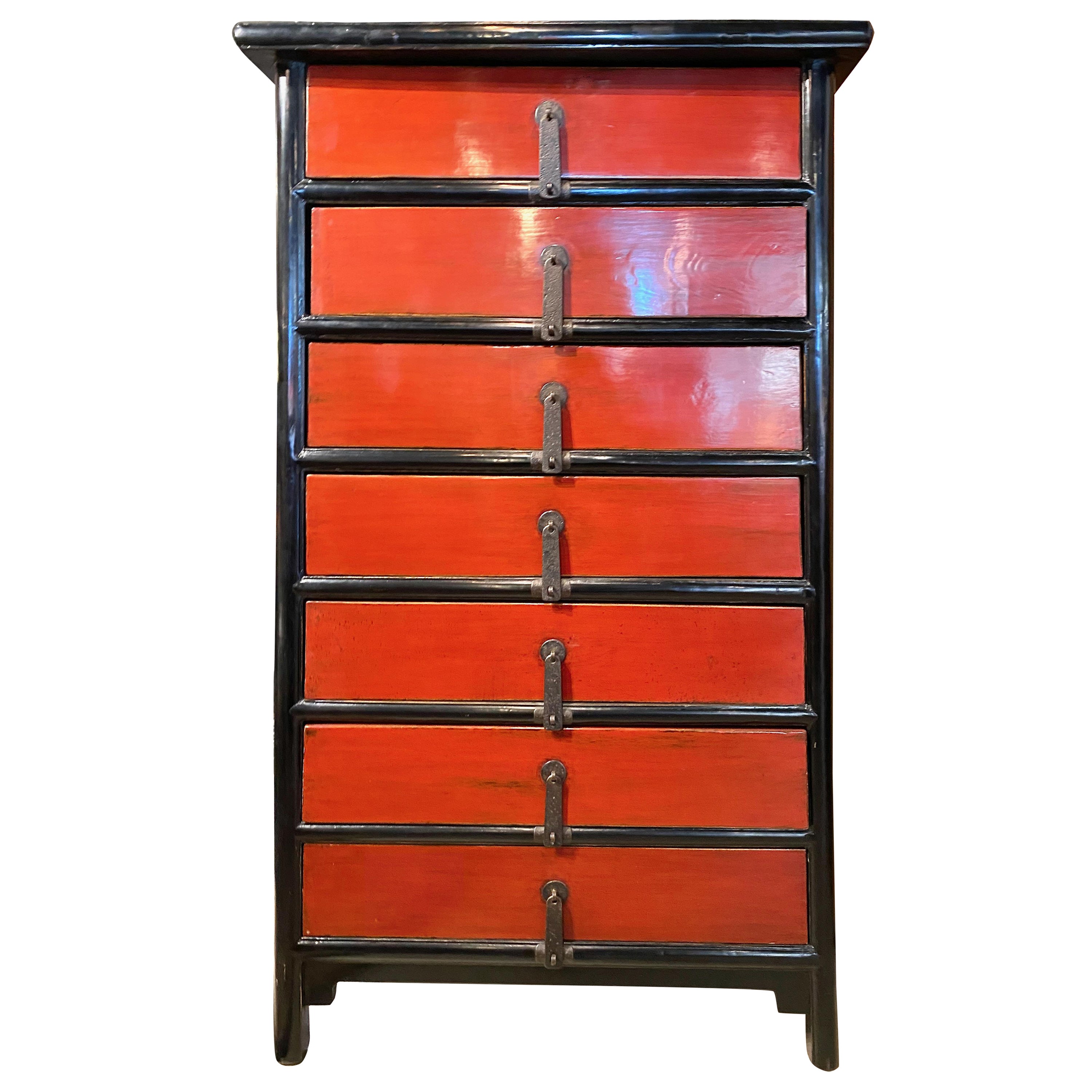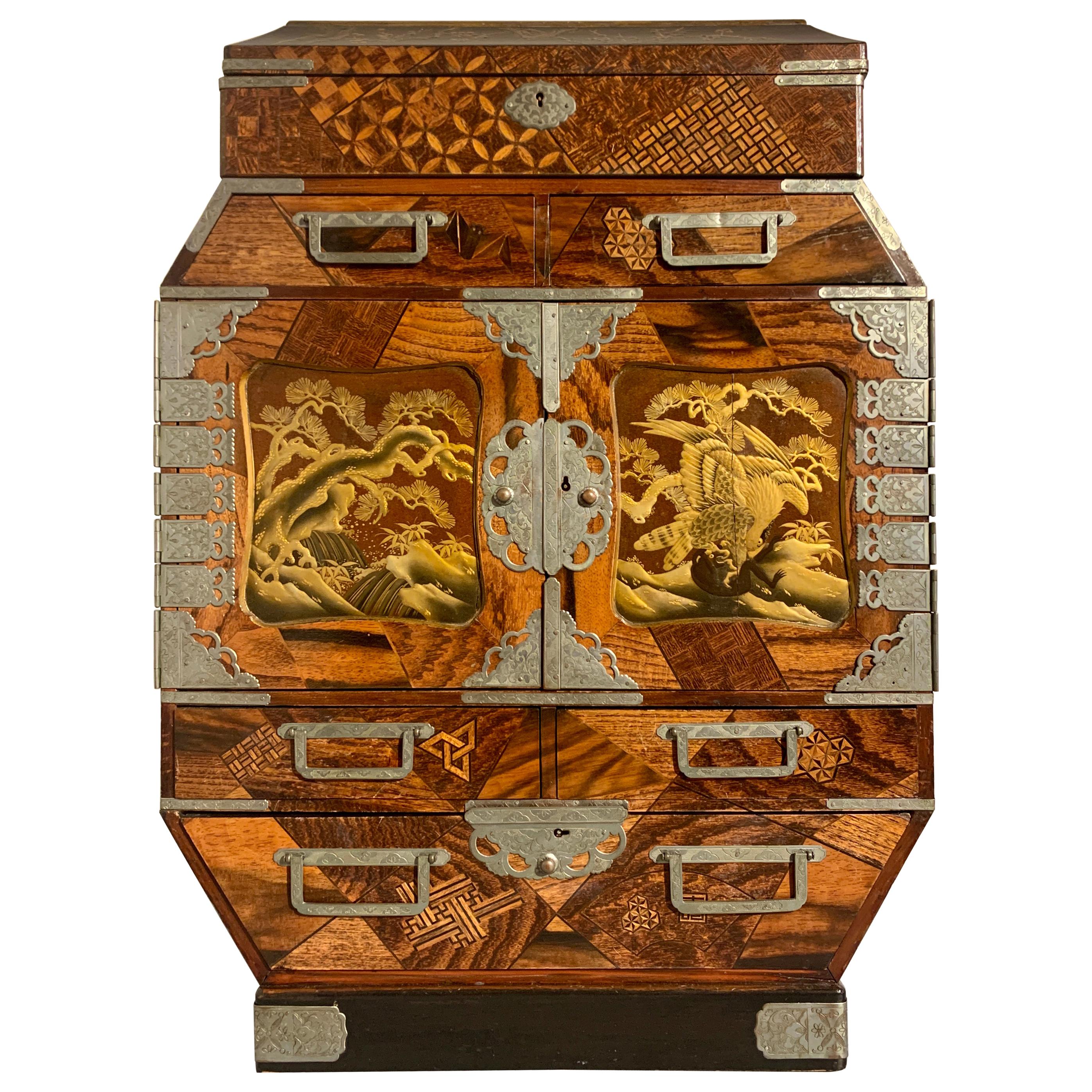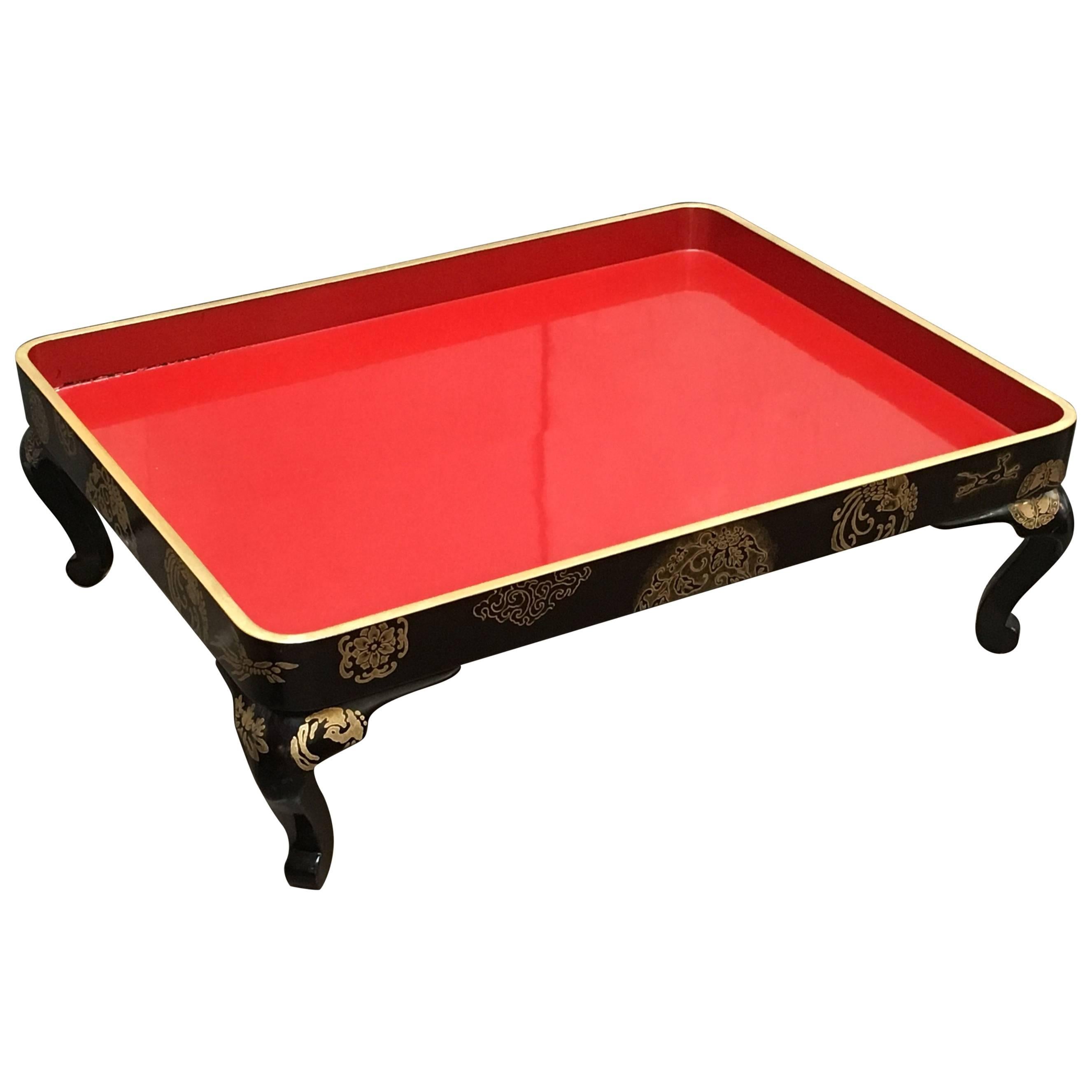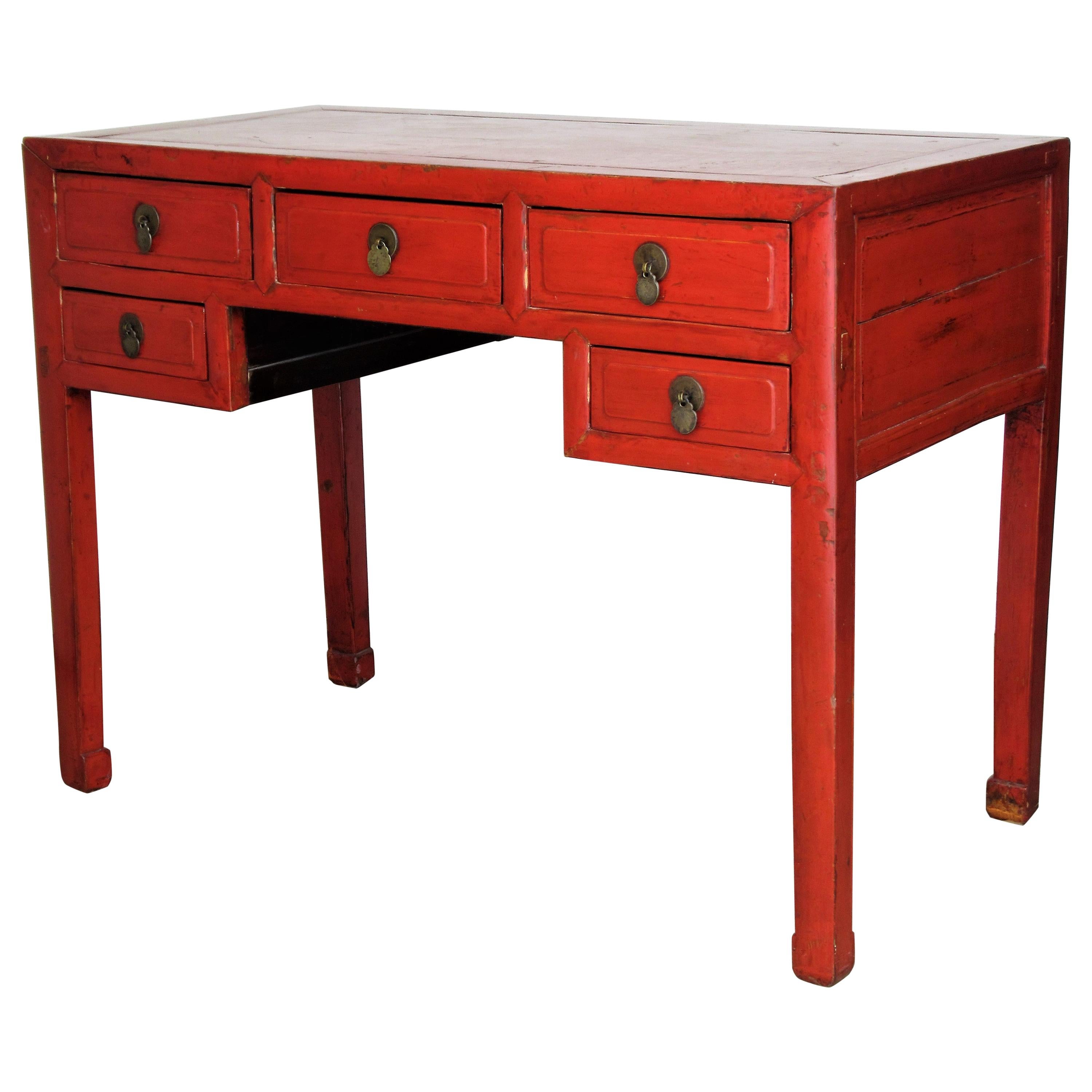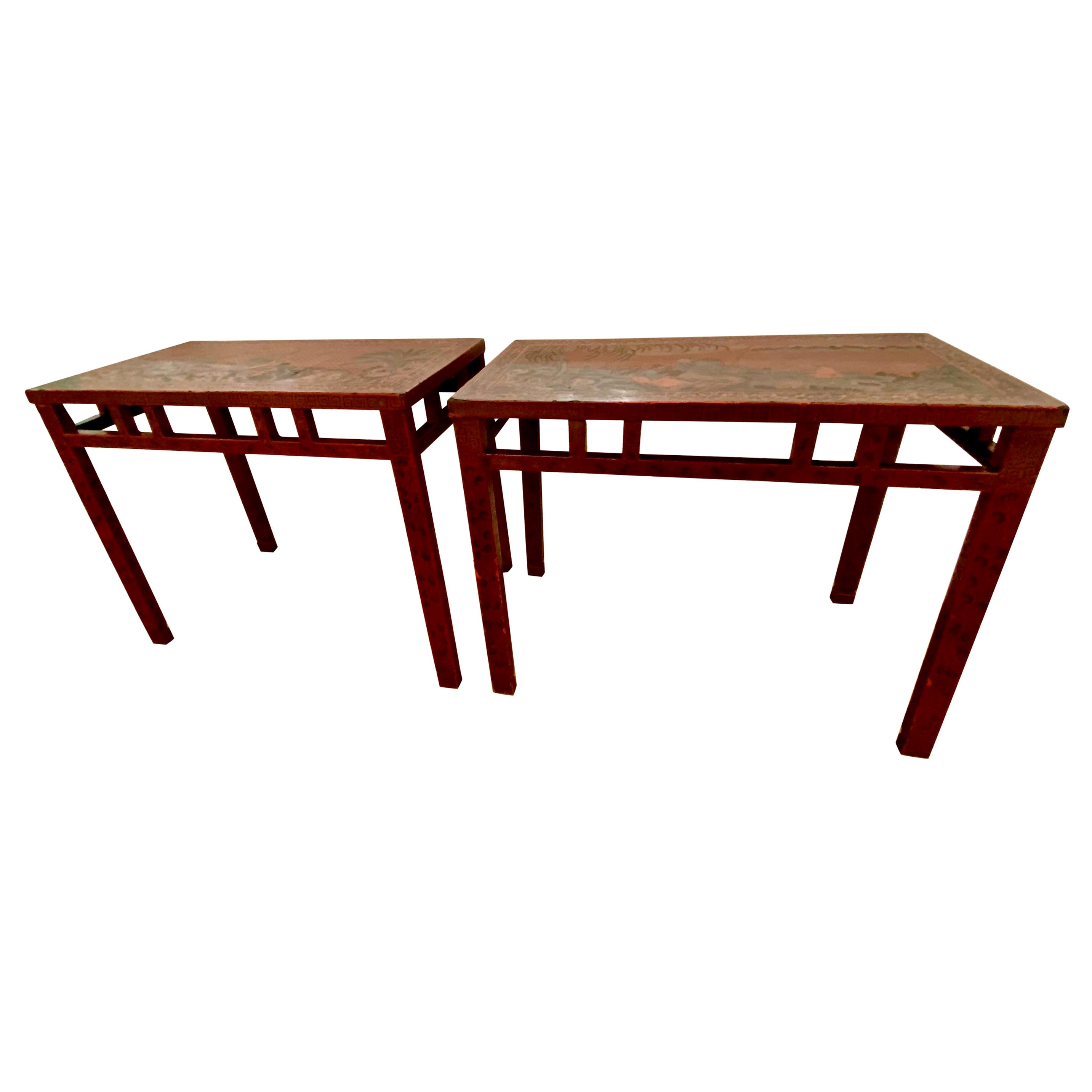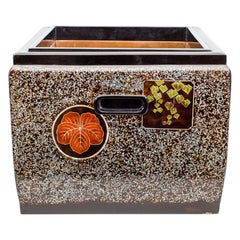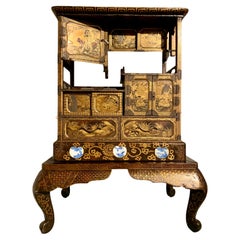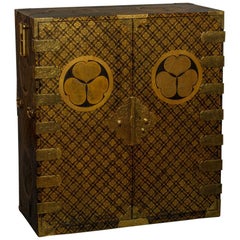
Japanese Lacquer Cabinet
View Similar Items
Want more images or videos?
Request additional images or videos from the seller
1 of 10
Japanese Lacquer Cabinet
About the Item
- Dimensions:Height: 42 in (106.68 cm)Width: 37.75 in (95.89 cm)Depth: 17.5 in (44.45 cm)
- Materials and Techniques:
- Place of Origin:
- Period:
- Date of Manufacture:circa 1900
- Condition:Details on request.
- Seller Location:Hudson, NY
- Reference Number:Seller: NA15651stDibs: LU855112207783
About the Seller
5.0
Recognized Seller
These prestigious sellers are industry leaders and represent the highest echelon for item quality and design.
Established in 1971
1stDibs seller since 2008
151 sales on 1stDibs
Typical response time: 8 hours
Associations
The Art and Antique Dealers League of AmericaAntiques Associations Members
More From This SellerView All
- Japanese Black Lacquer Tana (Tiered Tea Cabinet) with Gold Family CrestsLocated in Hudson, NYJapanese Black Lacquer Tana (Tiered Tea Cabinet) with Gold Family Crests, Covered with gold family crest designs. Made of lacquered wood and bronze mounts. Interior has wonderful r...Category
Antique Early 19th Century Japanese Edo Cabinets
MaterialsBronze, Gold Leaf
- Japanese Lacquer Hibachi (Brazier)Located in Hudson, NYJapanese Lacquer Hibachi (Brazier), Meiji period (1868 - 1912) Box- shaped Japanese hibachi with mother of pearl inlay, handles on two sides, and a cop...Category
Antique 1880s Japanese Meiji Lacquer
MaterialsCopper
- Japanese Lacquer Letter BoxLocated in Hudson, NYGold and shell marsh irises with pewter walkway wrapping around box. Korin style subject matter, nashiji ground interior and bottom with artist signature inside the lid. Signature re...Category
Antique Late 19th Century Japanese Lacquer
MaterialsGold, Pewter
$15,000 - Japanese Lacquer Kogo 'Incense Box'Located in Hudson, NYLate Edo (1614 - 1868) period incense storage box in stacked, double fan design. Fans have bamboo and plum design with a chrysanthemum crest. Silver metal rim and seat, nashiji (gold...Category
Antique Mid-19th Century Japanese Edo Lacquer
MaterialsGold
- Japanese Lacquer Koro 'Incense Burner'Located in Hudson, NYRemovable bronze top, with gold drip pattern at top. Cresting ocean waves on bottom with raised silver sea spray.Category
Antique Early 19th Century Japanese Edo Lacquer
MaterialsSilver, Bronze
- Japanese Lacquer Tray with Intricate DesignsLocated in Hudson, NYThis lacquer tray uses several lacquer techniques including multi-color painting of flowers, ito-me (thread pattern) and shell inlay. The artist was Shimano Sanshu (1877 - 1965). He ...Category
Early 20th Century Japanese Showa Lacquer
MaterialsLacquer
You May Also Like
- Japanese Lacquer Meiji Period Cabinet on Stand, circa 1890Located in Brighton, SussexA exquisite, fine quality Meiji period (1868-1912) Japanese black lacquer cabinet on stand with wonderful scrolling gilded decoration. H...Category
Antique Late 19th Century Japanese Japonisme Lacquer
MaterialsLacquer
- Japanese Lacquer Display Cabinet on Stand, Meiji Period, 19th Century, JapanLocated in Austin, TXA spectacular Japanese lacquer and porcelain inlaid display cabinet on stand, kazaridana, Meiji Period, late 19th century, Japan. The sumptuous kazaridana of traditional display cabinet form, with several shelves and enclosed spaces for display and storage. The cabinet decorated all over in beautiful maki-e lacquer against a dense nashiji ground and inset with blue and white Arita porcelain plaques. The front of the cabinet of asymmetric design, with two open display shelves at staggered heights, and several doors enclosing storage areas of various shapes and sizes, including one hinged corner door, two pairs of sliding doors, and one pair of hinged doors opening to reveal a rounded inset corner shelf. A pair of drawers below complete the cabinet. All supported on a separate tall fitted stand. The corner door decorated with a bold scene of a samurai warrior fighting a demon. This most likely depicts the warrior Watanabe no Tsuna battling the demon Ibaraki-doji at Rashomon gate, in which Watanabe no Tsuna attempts to help a young girl return home, carrying her on his back, only for the girl to turn into a demon, which he then must fight. The top pair of sliding doors with a scene of a man playing the sho, a Japanese mouth organ, along the banks of a river with a waterfall in the background. The bottom pair of sliding doors with a waterfall scene on one side, while a scholar lounges with his attendants on the other. The pair of hinged doors finely decorated with a pair of fully armored samurai. The two drawers wonderfully decorated in the kodaiji style with a stream of rushing water and various plants and grasses. The cabinet is decorated in the round, with the top, sides, and base of the cabinet decorated with various scenes of flowers and birds, and inset with blue and white Arita porcelain plaques in the form of traditional fan. The fans painted...Category
Antique 1880s Japanese Meiji Lacquer
MaterialsPorcelain, Softwood, Lacquer
- Rare Charming 17th Century Japanese Lacquer Cabinet with Gilt-Bronze MountsLocated in Amsterdam, NLA fine Japanese pictoral style lacquer cabinet with gilt-metal mounts Kyoto, Edo period, 1670-1690 Decorated in Japanese relief lacquer work, black lacquer ground decorated...Category
Antique Late 17th Century Japanese Furniture
MaterialsBronze
$41,219 Sale Price25% OffFree Shipping - 17th Century Japanese Export Lacquer Cabinet with Depiction the Dutch TradepostLocated in Amsterdam, NLA highly important Japanese export lacquer cabinet with depiction of the Dutch East India Company tradepost Deshima and the annual Dutch delegation on its way to the Shogun in Edo Edo period, circa 1660-1680 H. 88 x W. 100.5 x D. 54 cm This cabinet includes a later European japanned stand, but also a modern powder-coated steel frame. The latter can be designed and added to your specific needs. The sides and front of the rectangular two-door cabinet are embellished in gold and silver hiramaki-e and takamaki-e on a black roiro lacquer ground with a continuous design. The two doors depict a long procession of numerous figures travelling on foot and horseback along buildings and a pagoda into a mountainous landscape. This is the annual court journey, Hofreis, of the Dutch from Nagasaki to the Shogun’s court in Edo. Three horseback riders are dressed as Dutch merchants and a fourth figure, probably het Opperhoofd, is seen inside a palanquin, norimon. Just about to cross the bridge, two men are carrying a cabinet like the present one. Many Japanese figures on either side of the procession are engaged in various activities; some play musical instruments on board of small boats, others are fishing; figures inside buildings are depicted playing go, and farmers are tending to their rice paddocks. The upper part of the right door shows a large mansion, probably the local daimyo’s castle, with men kneeling before a man in the central courtyard. The court journey fits in with the foreign policy of the shogunate which accorded a role to the VOC alongside China, Korea, and the Ryukyu Islands who also had to pay tribute. However, the VOC employees were traders, having low status in Japan’s social hierarchy, and they were received with less deference than were the state embassies from Korea and the Ryukyu Islands. Nevertheless, the contacts with the Dutch were a welcome source of information to the Shogun about Europe and European science and technology. The left side of the cabinet depicts, in mirror image, a rare view of the artificial fan-shaped Deshima Island, the trading post for the Dutch in Japan. The island, where the Dutch flag flies, is surrounded by small Japanese boats and an anchored three-masted fluyt (cargo ship), flying Dutch flags, with on the stern the VOC monogram. On the bottom right a busy street of Nagasaki is shown, bordered by shops and leading up to the stone bridge. On the island the trees are beautifully painted, two cows can be seen, and the flagpole, all in very fine detail. Dutchmen and enslaved Malay are visible outside the buildings and two Japanese figures, probably guards, sit in a small hut in the centre. A maximum of fifteen to twenty Dutchmen lived on the island at any time and soldiers or women were not allowed. Restrictions on Deshima were tight, and the merchants were only allowed to leave the island by special permission. The Opperhoofd had to be replaced every year, and each new Opperhoofd had to make a court journey to pay tribute, present gifts, and to obtain permission to Margaret Barclay eep on trading. In the distance, many birds fly above the hills and a four-story pagoda can be seen. The right side of the cabinet is painted with other horse riders and their retinue journeying through mountains. The pair of doors to the front open to reveal ten rectangular drawers. The drawers are decorated with scenes of birds in flight and landscapes with trees and plants. The reverse of the left door with two thatched buildings, one with a ladder, underneath a camelia tree with large blooms; the right door with a three-story pagoda nestled among trees and both doors with a flying phoenix, ho-oo bird. The cabinet, with elaborately engraved gilt copper mounts, hinges, lock plates and brass handles, is raised on an 18th-century English japanned wood stand. A pair of large cabinets...Category
Antique 17th Century Japanese Edo Lacquer
MaterialsCopper, Gold
$1,373,968Free Shipping - Contemporary Japanese Temple-Form Tall Lacquered ChestLocated in Pasadena, CAThis is a beautifully designed and fabricated Japanese pagoda-shaped tall chest of drawers. The chest dates to the late 20th or early 21st century and is in very good to excellent ov...Category
21st Century and Contemporary Japanese Anglo-Japanese Furniture
MaterialsWrought Iron
- Antique Japanese Export Lacquer Bamboo Stick StandLocated in Brea, CAAntique Japanese export lacquer and gilt bamboo stick stand, see more pictures, 46'' x 27.5'' x 10''.Category
Early 20th Century Japanese Meiji Lacquer
MaterialsBamboo
Recently Viewed
View AllMore Ways To Browse
Japanese Family Crest
17th Century Japanned Cabinet
Japanned Cabinet 17th
Chinese Antique Furnitures
Chinese Antique Furniture Furniture China
Chinese Browns
From China
Chinese 19th
19th Century Chinese
19th Century Chinese Furniture
19th Century China
Brown China
Chinese Brown
Black China
Antique Lacquer
Lacquer Antique
Antique Lacquer Furniture
Antique Lacquered Furniture


